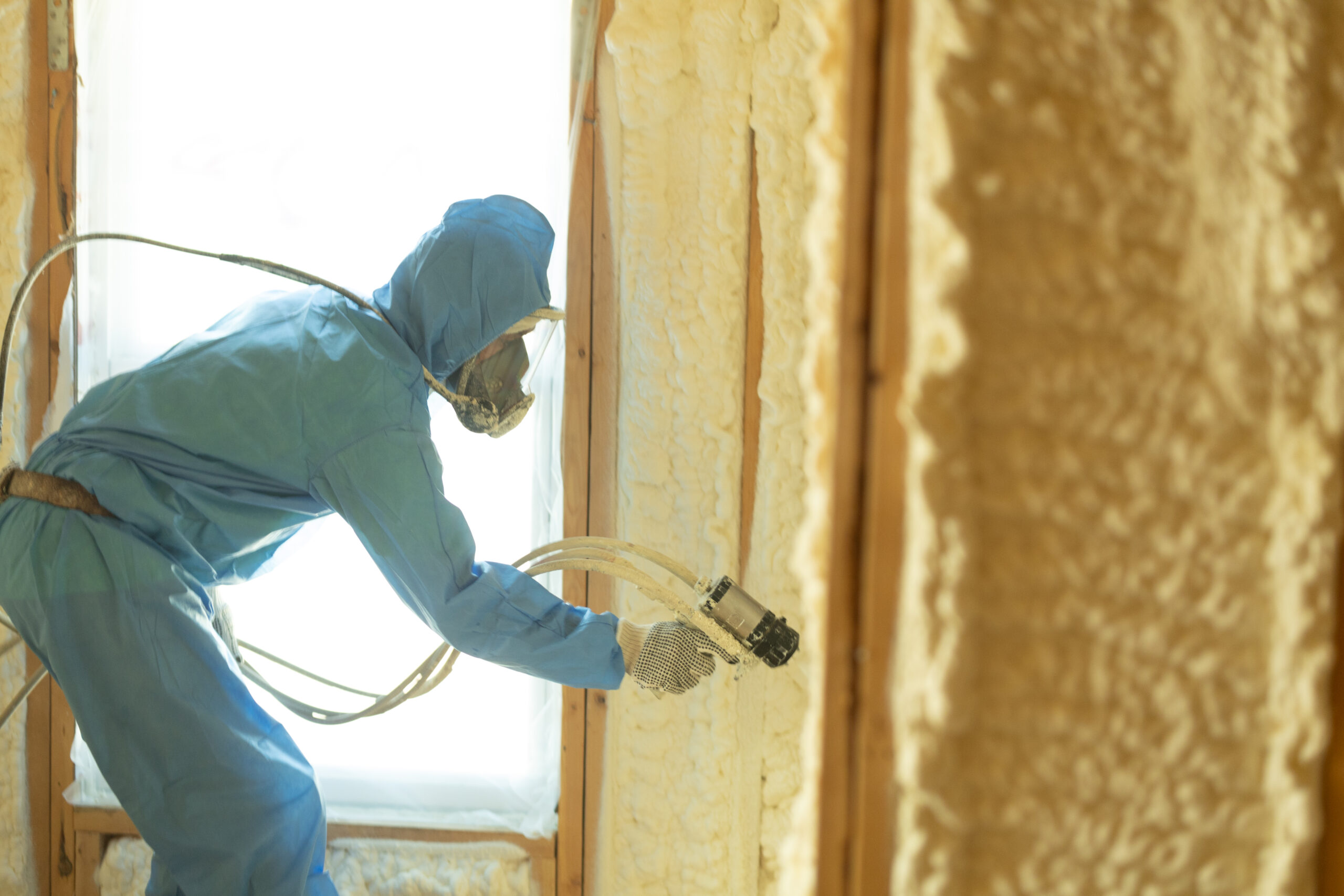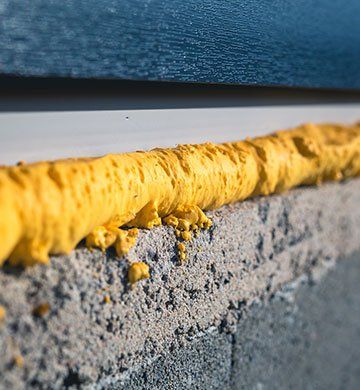The Ecological Impact of Spray Foam: Sustainability Considerations
The Ecological Impact of Spray Foam: Sustainability Considerations
Blog Article
Spray Foam: The Ultimate Option for Air Sealing and Insulation
Spray foam insulation has become a leading option for reliable air securing and thermal insulation, providing an unique combination of homes that set it apart from standard techniques. Its capability to expand and fill up voids makes it specifically reliable in stopping air leak, which can considerably affect energy performance. Understanding the complete range of its benefits, installation procedures, and comparisons with other insulation kinds is crucial for making informed decisions. As we explore these facets, the effects for both brand-new constructions and retrofits become progressively substantial. What variables should influence your choice?
What Is Spray Foam?
Spray foam is a functional insulation product that integrates the principles of air sealing and thermal resistance to enhance energy efficiency in structures. Composed mostly of polyurethane or various other similar compounds, spray foam is applied as a fluid that broadens upon call with surface areas, creating a solid, constant layer of insulation. This unique residential or commercial property permits it to fill gaps, splits, and spaces that typical insulation products may overlook, providing a premium air seal.
There are 2 major sorts of spray foam: open-cell and closed-cell. Open-cell spray foam is lighter and more flexible, using superb sound absorption and a lower R-value per inch - Spray Foam. On the other hand, closed-cell spray foam is denser, providing a higher R-value, moisture resistance, and included architectural honesty to developing parts
The application process commonly entails specialized tools, making certain a smooth application that adheres to numerous substrates, consisting of timber, concrete, and metal. This flexibility makes spray foam appropriate for both brand-new constructions and retrofitting existing frameworks. Its capacity to create a closed barrier dramatically adds to lowering power consumption and enhancing interior air high quality, consequently making it a preferred option amongst contractors and home owners alike.
Benefits of Spray Foam Insulation
One of one of the most substantial advantages of spray foam insulation is its exceptional capacity to produce a continuous air barrier, which successfully reduces energy loss. Unlike typical insulation products, spray foam expands to fill up splits and spaces, making sure that air leak is significantly reduced. This characteristic not only enhances power efficiency but additionally results in lower utility expenses in time.
Additionally, spray foam insulation gives exceptional thermal resistance, adding to an extra steady interior environment. Its high R-value per inch enables effective insulation in restricted rooms, making it excellent for attics, walls, and crawl areas. The moisture-resistant buildings of spray foam assistance avoid mold and mold growth, advertising much healthier living problems.
An additional vital benefit of spray foam insulation is its sound-dampening qualities (Spray Foam). It efficiently decreases sound transmission in between spaces, creating a quieter and more comfy home atmosphere. The resilience of spray foam likewise stands out, as it does not droop or clear up in time, preserving its efficiency throughout its life-span
Just How Spray Foam Functions
Comprehending how spray foam insulation functions is necessary for appreciating its performance in air sealing and thermal resistance. Spray foam insulation includes two primary components: isocyanate and polyol material. When these components are blended, they undergo a chemical reaction that causes the material to broaden rapidly, creating a dense foam that fills up fractures, cavities, and gaps.
As the foam expands, it sticks to surface areas, forming a closed seal that significantly decreases air seepage. This characteristic makes spray foam insulation extremely reliable at stopping drafts and moisture penetration, which can lead to power loss and damages gradually. Additionally, the closed-cell variant of spray foam offers superior thermal resistance due to its inflexible framework, properly lessening warmth transfer.
The distinct properties of spray here are the findings foam permit it to adapt uneven surfaces, guaranteeing comprehensive coverage and a seamless barrier. As a result, spray foam insulation not just enhances energy performance Discover More Here but likewise contributes to enhanced indoor air quality by reducing the accumulation of irritants and toxins. Inevitably, understanding the mechanics behind spray foam emphasizes its role as an exceptional option for insulation and air securing in both residential and industrial applications.
Setup Process Overview

Before installation, the space needs to be appropriately cleaned and prepped, making sure that surfaces are without particles, wetness, and dust. Because contaminants can jeopardize attachment and overall efficiency, this step is essential. Once the location is prepared, the application involves blending both elements of the spray foam, which expands upon call and loads voids properly.
Educated professionals ought to conduct the installment, using customized devices to make sure uniform protection and ideal density. Safety and security precautions, including putting on protective gear and ensuring proper ventilation, are important throughout this procedure. After application, the foam normally treatments quickly, creating a solid barrier that improves energy efficiency.
Contrasting Spray Foam to Typical Insulation
When evaluating insulation alternatives, spray foam insulation stands out in comparison to standard products such as fiberglass and cellulose. Unlike my explanation fiberglass and cellulose, which can enable air infiltration, spray foam broadens upon application, filling voids and holes to create an impermeable seal.
Furthermore, spray foam offers a higher R-value per inch than traditional insulation kinds, providing even more efficient thermal resistance in a thinner profile. This particular is particularly advantageous in spaces with limited tooth cavity depth. Moreover, spray foam is resistant to dampness and mold and mildew growth, which can be a considerable concern with cellulose and fiberglass, especially in humid settings.
Nonetheless, spray foam insulation normally lugs a greater in advance price than its typical equivalents. Property owners need to evaluate this preliminary financial investment against lasting energy savings and efficiency benefits. Eventually, while both insulation kinds offer their purpose, spray foam arises as an extra sophisticated option for modern insulation requirements, particularly in terms of air securing and thermal efficiency.

Final Thought
In recap, spray foam insulation represents a highly effective remedy for achieving ideal air securing and thermal resistance. Its distinct residential properties, consisting of dampness resistance and noise dampening, make it appropriate for numerous applications in both brand-new constructions and retrofitting jobs (Spray Foam). The initial costs might be higher compared to standard insulation materials, the long-lasting advantages, such as considerable power financial savings and enhanced indoor air quality, validate the investment and highlight its value in contemporary building methods.
Spray foam insulation has actually arised as a leading option for reliable air sealing and thermal insulation, supplying a special combination of properties that set it apart from typical methods.Spray foam is a functional insulation material that integrates the concepts of air securing and thermal resistance to boost power effectiveness in structures.When evaluating insulation choices, spray foam insulation stands out in comparison to traditional products such as fiberglass and cellulose. Eventually, while both insulation types serve their objective, spray foam arises as a more sophisticated remedy for contemporary insulation demands, particularly in terms of air sealing and thermal efficiency.
In summary, spray foam insulation represents an extremely effective remedy for achieving ideal air sealing and thermal resistance.
Report this page